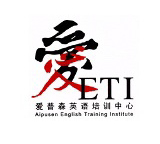OUR PRIMARY SCHOOL PROGRAM recognizes the importance of communicative skills and cognitive proficiency. We therefore use several current TESL approaches to teach communicative skills that are compatible with the students' cognitive proficiency. Three of these approaches include:
The Natural Approach
We emphasizes the natural development stages that language learners go through, by guiding teachers to ask questions appropriate to the student's stage.
Total Physical Response (TPR)
Our teachers use TPR extensively with younger classes. Students are asked to respond to simple commands and directions in songs, chants, role-plays, and games.
Aural/Oral
Our programs reflect the distinction between receptive and productive language, and in the early stages, students will hear more English than they will be expected to produce.
Open Sesame: English as a Second Language Series (Oxford University Press)
This five stage ESL program for primary school children features the world famous Sesame Street Muppets, and includes a book (color photos), activity book, cassette tape of songs, dialogues, chants and a corresponding booklet for each student. Students begin by learning basic communicative skills in English and then move on to develop higher cognitive skills needed to succeed in an English speaking classroom. Our teachers combine early childhood learning theories with current second language ESL approaches to create a positive and successful learning environment for young language learners.
Big Bird's Yellow Book is for new beginners. Learning proceeds from pictures, songs and games. There are no written words in this book, so that students are not overwhelmed by too many unfamiliar elements in learning English as a foreign language. Students are taught everyday vocabulary, simple sentence structures, and patterns along with numbers, colors, prepositions and the concepts of "same" and "different". At this level, students are also expected to become familiar with classroom management terms.
Grover's Orange Book is for beginners who already have some English proficiency. Learning continues with conversations, chants, and songs, which provide an introduction to the printed word. Students learn important math concepts such as counting, identifying basic shapes, identifying money, using a ruler, and telling time.
Cookie Monster's Blue Book is for high-level beginners, who already have some reading skills. Starting with sight words, the text moves on to simple sentences and paragraphs. Using context, initial consonant clues, and grapheme bases, students are encouraged to attempt learning new words and reading on their own. They also get more practice writing words and simple sentences. Learners review and then expand vocabulary and grammar.
Prairie Dawn's Purple Book is for intermediate students. It reviews key grammar points and new vocabulary within topical and thematic units. This book provides further development of basic communicative skills and expands cognitive skills through content area lessons in subject matters such as math, science, and social studies.
Ernie and Bert's Red Book is for high intermediate to advanced students. This book presents more sophisticated grammar and vocabulary, and stresses the skills students need to attain a higher level of proficiency in English. These communicative skills include debating, problem solving, interpretations, and judgement. In addition, cognitive skills are developed through content area lessons in math, science and social studies.
Our World (National Geographic Learning)
This six-level primary series uses real-world content, stunning photographs and video from National Geographic, and a variety of interactive digital resources to fully engage and motivate students as they learn about the world in English. Students receive a book, workbook, and a DVD with fun English games, songs and video. They also receive a username and password that can be used to play games and find additional multi-media material online at the related National Geographic website.















